Venice is a woman, with its fish-shaped structure reminiscent of the tail of a sinuous mermaid lying gently in the shallow waters of the lagoon. Too often, when the story of Venice is told, it is always about male figures: many doges and patriarchs, travellers, writers and artists, unrepentant seducers. No mention is ever made of excellent female figures who have written extraordinary pages of history, both ancient and modern. The women of Venice have always stood out for their intelligence and elegance: at the time of the Republic they were considered the most refined aristocrats, wearing elegant and sumptuous dresses, always complemented by precious jewels and make-up that made their lips sinuous and their looks intriguing. But they were libertine women, well aware of their skills and strength: dedicated to study and reading, they always played an important role. Today, as then, the ladies of Venice stand out for their skills, for their elegance and attention to detail, for their smile and kindness. Of course, they also get angry, like all women who have a strong character and a strong personality. History, of yesterday and today, teaches us how Venetian women had great self-respect and self-respect, fundamental characteristics for living in a world of men, without being dominated by them. But in spite of this, and in spite of the cultural and cosmopolitan air that one breathed at the Serenissima, its women were never able to break down the wall of certain prejudices that kept them out of the spheres of power, considered to be the exclusive prerogative of men.
It was in Venice, however, that women's professional independence was the first to be born, and it is in Venice that they saw consolidated working figures who are still the pride of the world today. I am talking about the lacemakers of Burano who were able to become protagonists of an extraordinary art, coveted by the nobles of the greatest European courts, and which is still today considered a real treasure; and of the marvellous impiraresse, the women who, with the use of small Murano glass beads, created, and still do today, splendid jewels that adorn the décolletés of women all over the world.
I will tell you just some of the extraordinary female stories of Venice.
Elena Lucrezia Corner Piscopia: the first woman to graduate in the world
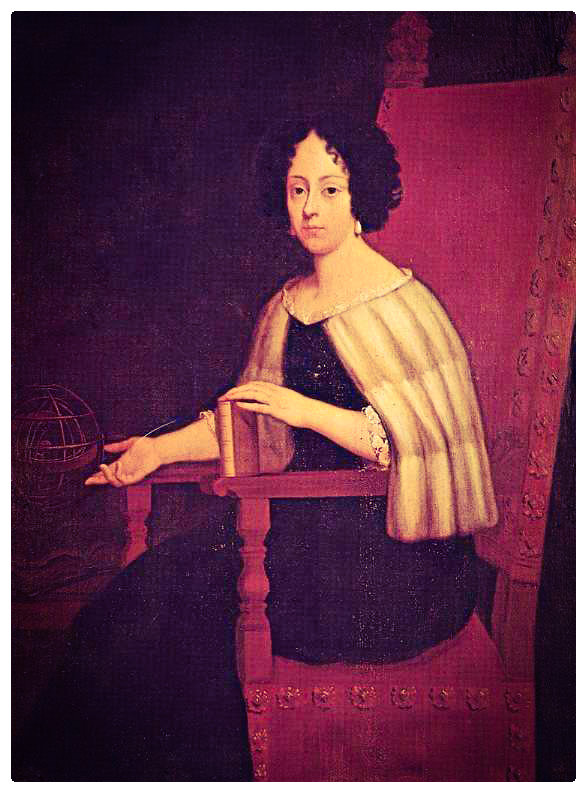
The first woman to graduate in the world was Venetian!
She was Elena Lucrezia Corner Piscopia. Daughter of a marriage considered scandalous between the rich prosecutor Giovanni Corner Piscopia and Zanetta Bon, a woman of popular extraction, Elena was a very shy and modest girl, to the point of considering spending her life in a convent. But her love for studying always became very passionate and prevalent, ranging from Latin and Greek books to Hebrew and Spanish, so much so that she earned the nickname of septilingual oraculum. But he also knew mathematics and music, dialectics, astronomy, philosophy and theology. And it was precisely the studies of theology that Elena would have wanted to deepen during her university career, but this possibility was denied her by the Church as a woman. At the time this type of studies were exclusively male. She dedicated herself to philosophy and graduated from the University of Padua on June 25, 1678 with a thesis on Aristotle. The event had such a strong appeal that about 30 thousand people attended. He was just over 30 years old. He later joined the College of Physicians and Philosophers of Padua, but never practiced the profession. After graduating he dedicated himself to the needy by dressing in the habit of the Benedictine oblates. He died when he was only 38 years old.
The history of Elena allows us to remember that the Republic of Venice was the first in Italy to establish the university chair of mathematics and to allow public lessons in algebra. But also to give scholarships for poor and very deserving students who had difficulty in continuing their studies. She also supported the new theories and forms of knowledge, allowing Giordano Bruno and Galileo Galilei to give their public lessons, where elsewhere they were forbidden.
He was far ahead of the Serenissima...
Elisabetta Carminer Turra: the world's first journalist
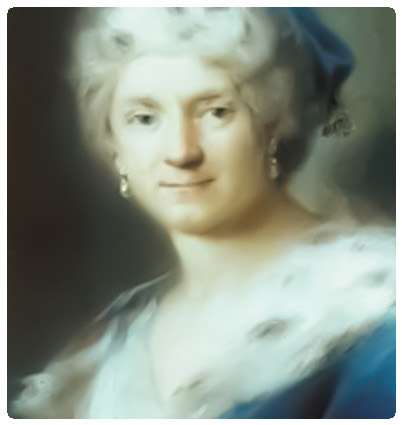
Elisabetta Carminer Turra was born in Venice in 1751. She began to write at a very young age, thanks to the help of her father Domenico, with whom she collaborated on "L'Europa letteraria". In 1774 she founded "Il giornale enciclopedico", thus becoming the first editorial director in the world: it was an Enlightenment periodical that with time and Elisabetta's direction became increasingly important, becoming one of the main newspapers of its kind at the time. She collected around her always prominent figures of science and literature: the living room of her house in Vicenza, where she had moved after marrying Antonio Turra, became one of the most coveted. It was in 1796 when, while attending a play, she was struck in the chest by a drunken soldier: that blow was so violent that the contusion generated a tumor that killed her a few months later.
Veronica Franco: the Serenissima's favourite prostitute
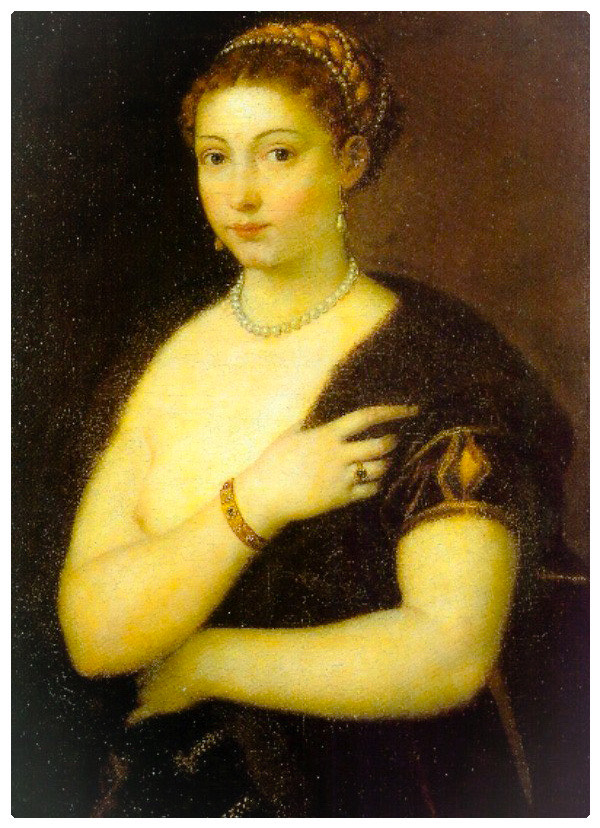
Well, not all the women of the Serenissima have gone down in history for their cultural skills. Others have gone down in history for "other skills"...
The Republic of Venice has always been the kingdom of freedom of expression, and prostitution was a very widespread "art", which divided prostitutes into honest, i.e. those of high level, and those of light, which satisfied the lower classes. We are reminded of this in the city by the Ponte delle Tette (breasts bridge), in the Sestiere di San Polo, whose name refers to a very precise historical period. It was the end of the fifteenth century and in the very free but very Catholic Venice homosexuality spread: a "new sexual custom" fed also by the presence of foreigners from the East, who were more open-minded to the question. This was not well allowed in a city where the Christian faith was very fervent. Certainly homosexuals could not be considered heretics and therefore they could not be hanged among the Pillars of Saint Mark! Then a rather singular solution was found: prostitutes in the area of San Cassiano were asked for help and they were obliged to show their breasts from the palaces and the bridge, so as to attract passers-by and bring them back on the right path, we could say "in the bosom" to Christianity.
Veronica Franco was the most famous courtesan of the Renaissance period. She was introduced into the world of prostitution by her mother, and practiced in the area of the Rialto Bridge. She distinguished herself for her strong personality and her looks, proving to be a cultured and very charming woman. This allowed her to get in touch with the men of power who opened the doors of the most important literary circles in the city.
Her activity as a courtesan was accompanied by the study of poetry and towards the end of the sixteenth century she published two volumes of poems: "Third rhymes" and "Family letters to different people". The great visibility she enjoyed and the adoration of most, attracted malevolence from envious women and men who could not have her, to the point that she often had to defend herself before the Inquisition against accusations of witchcraft.
But she never bent her head, showing how certain professional choices do not always coincide with the soul and morals of those who make those choices: there are many reasons why a person chooses, not always sharable, but never open to criticism. In fact, Franco also distinguished herself for her generosity, creating a hospice where courtesans and their children could find refuge.
It's not always the dress that makes the monk...
Caterina Corner: the last queen of the Serenissima

The late fifteenth century history of the Serenissima is strongly linked to the name of Caterina Corner, Queen of Cyprus.
Belonging to the noble Corner family, owners of the sumptuous Ca' Corner della Regina, Catherine, at the age of only 14, at the behest of her uncle Andrea Corner, married by proxy the King of Cyrus, James II: history has it that he fell madly in love with the child when he saw her portrayed in a painting. A marriage that seemed to be a contract, which offered advantages both to the Serenissima, strongly intent on expanding its power in those areas, and to James II, in need of a powerful ally, as he found himself having to deal with the pressure of the Genoese on Famagusta, the Turks and his half-sister Carlotta, whom he had ousted from the throne.
The real marriage was celebrated only 4 years later when Catherine arrived on the island in 1472. She was immediately pregnant but also immediately widowed: James II died suddenly the following year before she could give birth to her son, who was born a few months later and who was given the name James III. Victim of conspiracies and an unclear will of the king, the subject of traps by Charlotte and her husband's 3 illegitimate children, Catherine at first failed to reign. In addition, her mother-in-law had her son stolen from her. She was also deprived of the crown jewels and the royal seal. But the woman's most terrible moment came with the death of her little son from malarial fever, before he had reached the first year of age. The kingdom was rightly returned to her following a propitious intervention by the provveditor Vettor Soranzo who, sent by the Venetian Republic to the island with 10 galleys, was able to establish peace allowing Catherine to finally reign: and she did so with strength and attitude, showing character and strong personality, worthy daughter of a power that had conquered the world. After many years of regency, in 1488 a new conspiracy broke out and at that point the Republic decided to recall the Queen, forcing her against all her will to abdicate in favour of her homeland, which thus annexed the kingdom of Cyprus. Catherine's return to her homeland was an unprecedented, sumptuous and sumptuous event, still remembered today with the annual procession that anticipates the Historical Regatta, one of the most heartfelt events in the city. It was June 6th 1489. Returning to the Serenissima without the title of queen, she was appointed Domina of Asolo, in whose castle she withdrew with her court until her death in Venice in 1501.
Today her remains rest in the Church of San Salvador, in a funeral monument made for her by her brother Giorgio.
A life undoubtedly full, one of the most important pages of history of the Serenissima.
Eleonora Duse: the divine last born daughter of Saint Mark

Eleonora Giulia Amalia Duse was the symbolic actress of Italian theatre at the turn of the nineteenth and twentieth centuries: a very strong personality who marked an era, crossing Italian and European borders, even reaching the lands overseas.
She soon began her career in the theatre, when she was only 4 years old, when she played the role of Cosette in the pieces "Les miserables", a transposition of Victor Hugo's novel. And the great popularity came later, with an opera by Emile Zola, "Terese Raquin", which earned her unanimous approval from the public and critics.
Duse's acting paved the way for a new way of doing theatre, a sort of revolution reminiscent of Carlo Goldoni's most famous one. In her interpretations she challenged the values of the bourgeoisie, until then untouchable, tackling difficult and thorny issues such as sex, family, marriage, money and the role of women in society, uncovering a Pandora's box: what came out was the portrait of a society respectable only in appearance, but hypocritical and rotten in substance, in which money and the interests that revolved around it, at the expense of real emotions and genuine relationships. And to represent this, Duse did not use masks: she did without make-up, both on stage and in her private life, always preferring to show herself naturally, proudly wearing her very marked features. And she was beautiful!
She was born in Vigevano in 1858. So what was her relationship with Venice? Eleonora felt Venetian in her heart and soul, because her father was originally from Chioggia, and because she had always frequented the city that had given her great professional success, but above all the love of her life, Gabriele D'Annunzio. The meeting with the great poet dates back to 1882 in Rome, and Duse described him as "already famous and very attractive, with blond hair and something burning in his person". But love blossomed in Laguna, only in 1894: a very tormented passion that lasted 10 years. That relationship allowed D'Annunzio to reach great popularity, because the famous actress brought on stage many of her dramas, often financing them herself. Gabriele gave her the nickname of divine, dominated by a magnetic force so strong as to capture the attention and love of all. In 1900 he dedicated the novel "The Fire" to her, emblem of a tormented and strong love that lasted until her death, when he wrote "died the one I did not deserve", calling her "the last born daughter of Saint Mark", mending the bond that united the divine to the Serenissima, which was the frame of their love.
Luisa Casati Press: the divine marquise
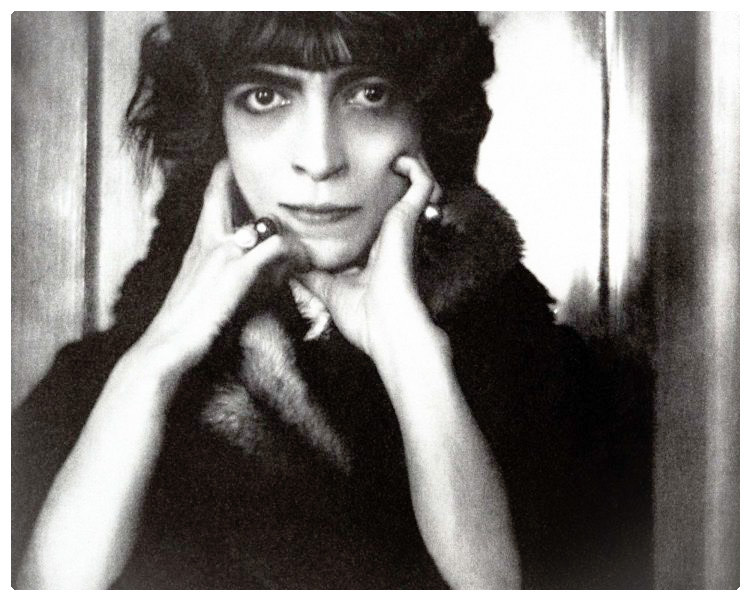
Luisa Amman was born in Milan in 1881 into a very rich family, as her father was a cotton producer. She and her sister Francesca inherited the large family fortune in adolescence, due to the premature death of her parents, and soon began to be enchanted by the luxurious and princely life. She soon showed a strong and eccentric personality and became passionate about the lives of great people, such as the Empress of Austria Sissi.
Her androgynous appearance, her slender and thin physique, her penetrating and cheeky gaze always attracted the attention of those around her. Little more than an adult, she chose to marry the Marquis Camillo Casati Stampa di Soncino, becoming the Marquise Luisa Casati Stampa. But she discovered very soon that the quiet life of her wife and mother (she had only one daughter, Cristina) did not agree with her free and rebellious soul to the stereotypes of the time. Only after 10 years of marriage did she choose to leave Milan to move to Venice and live her eccentric and nonconformist spirit to the full. She bought the Palazzo Venier of Lions on the Grand Canal (now the Guggenheim Museum): in the villa she held sumptuous parties and dances that attracted prominent personalities from all corners of the world, and populated the garden with exotic animals, such as albino blackbirds, leopard cats, parrots, boas and a cheetah that the Marquise loved to walk with a leash of diamonds and precious stones, which inspired a famous Cartier jewel, of which she was a loyal customer. Luisa was rich, very rich, and she loved luxury and loved to flaunt it, in spite of the difficulties of the poorer classes. She loved to show off her extravagance, that being over the top, off the screens that made her one of the most emblematic and iconic characters of the time, and the availability of a huge patrimony allowed her to satisfy her every whim. She was self-centred and wanted to feel people's passionate eyes on her: one of her most singular habits was to walk in St. Mark's Square in the evening, naked, covered only with a fur coat holding her cheetah on a leash, while a faithful servant would follow her with a torch so that she would be illuminated in the darkness of the night and admired by passers-by.
She had an extraordinarily peculiar way of dressing up. The greatest designers of the time competed to make her made-to-measure clothes: she always wore pleated tunics, long peplums, animal patterns and often wore soaring headdresses with complex structures, then enriched with stones and feathers, which made her a true fashion icon of the time. But she was a woman who also invested a lot in haute couture, paying large sums of money to have the best fabrics, such as the one with which the famous "queen of the night" dress by couturier Bakst was made, which she wore to a Parisian masked ball, completed with diamonds!
He also stood out for his bizarre make-up, like the black circle drawn around his green eyes, whose pupils were always dilated with a few drops of belladonna and adorned with very long false eyelashes, for a bewitching look. Obviously not to be missed was the powder that whitened the complexion, then illuminated by the fiery red lipstick.
The Marquise was not only appearance at all, but also much substance. An intelligent woman of great culture, she always surrounded herself with the most culturally prominent figures, becoming the muse of great artists such as Giovanni Boldini, who loved her light-hearted and anguished gaze, Giacomo Balla, Umberto Boccioni, Filippo Tommaso Marinetti and Man Ray. Their acquaintance indoctrinated her to a deep knowledge of art, becoming then an important and appreciated collector. But her aim was to become a work of art herself and for this reason she loved to be the object of paintings, sculptures and photographs, by the great artists she knew or by young talents she found.
The frequentation of literary circles allowed her to meet Gabriele D'Annunzio with whom she lived a long history of clandestine love, as she was still married to the Marquis. The poet loved her madly, letting himself be inspired by many of her works, such as Forse che si, Forse che no, in which the writing of the protagonist Isabella Inghirami is a clear homage to her beloved whom the Vate adored to call Kore, like the queen of the underworld, and whom she appealed to as divine marquise.
The unbridled luxury of Casati did not last forever and in the last years of her life she left Venice for London, where she died in total misery in 1957.
"To be different means to be alone. I don't like the ordinary, so I am alone." cit Marquise Luisa Casati Stampa
Peggy Guggenheim: the last dogaressa
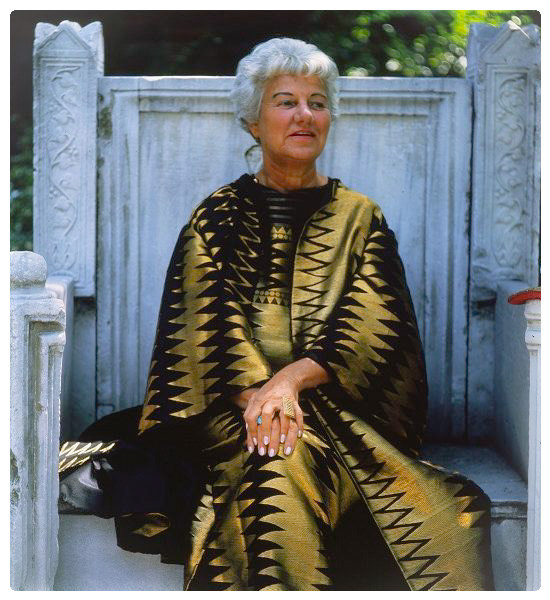
Peggy Guggenheim, the last dogaressa of Venice: an extraordinary art collector and a woman of great sensitivity, patron and protector of all the arts. An international figure who has written a wonderful page of Venetian history, which still today millions of visitors browse through as they immerse themselves in Peggy's magnificent world.
Born in New York at the end of the nineteenth century into a wealthy family, the economic and cultural condition in which she lived allowed her to follow and indulge her passions, despite the loss of her father in the disaster of the Titanic. An intelligent and sensitive woman, she immediately showed great interest in the art world and her social position soon allowed her to start collecting works, thanks also to her marriage to the artist Laurence Vail: it was he who allowed her to get in touch with the great exponents of modern art, some of whom remained in her circle of close friends for the rest of her life, such as Marcel Duchamp who helped her a lot in understanding the works, a fundamental didactic basis for her future research of budding artists. Her passion and support for the avant-garde made Peggy a real beacon for post-war artists and in 1938 she opened the First Guggenheim Gallery in London, where Vasily Kandisky exhibited for the first time in England: it was the first step towards a brilliant career.
His collection became so important that in 1948 he was invited to exhibit it at the first Venice Art Biennale: he fell so in love with the city that he decided to move his life and his collection to the Lagoon. In the same year she bought the Palazzo Venier of Lions and transformed it into a house-museum: her intention was to make contemporary art accessible to everyone and that's why she used to open the doors of her house to make her works known. Free of charge, just for the sake of spreading beauty. His collection was so fascinating that it became, together with his person, a point of reference in the world panorama of contemporary art. After his death the collection and the palace were donated, at his behest, to his uncle's Solomon R. Guggenheim Foundation, which included the famous New York museum by Frank Lloyd Wright.
Today the museum with its numerous presences is the second most visited museum in Venice. Visiting it means plunging into the life and passions of the great woman who cared for it like a son and who carried the important message throughout her life: art can belong to everyone and everyone must be able to enjoy it.
Peggy, was an extremely modern woman, with great charm and deep sensitivity who knew how to live her era to the full and was able to give a deep meaning to her passions. With a strong character, she loved to spend her free time surrounded by her beloved little dogs, to the point that her body is buried next to them in the palace garden. An eclectic personality who also became an icon for the use of cumbersome and bizarre accessories, such as her weird and original earrings. But what increased the image of the myth were above all her sunglasses that became true cult objects: representing the wings of a butterfly, they were created especially for her by the artist Edward Melcarth and became an essential element of her person, a fundamental object in the creation of the icon Peggy. Today you can find these glasses on sale at the museum shop: if you want to look at the world as the great Peggy looked at it...
Extraordinary women, wonderfully authentic, strong personalities who have managed body and mind as they pleased, without conditioning or pressure, exceptionally modern, which have left an indelible mark on the history of Venice.
"Well. What I was saying was that it costs a lot to be authentic, my lady, and in this thing one doesn't have to be stingy, because one is more authentic the more one resembles the idea one has dreamt of of oneself". cit. Monologue by Agrado, from "All about my mother" by Pedro Almodovar.










Lascia un commento